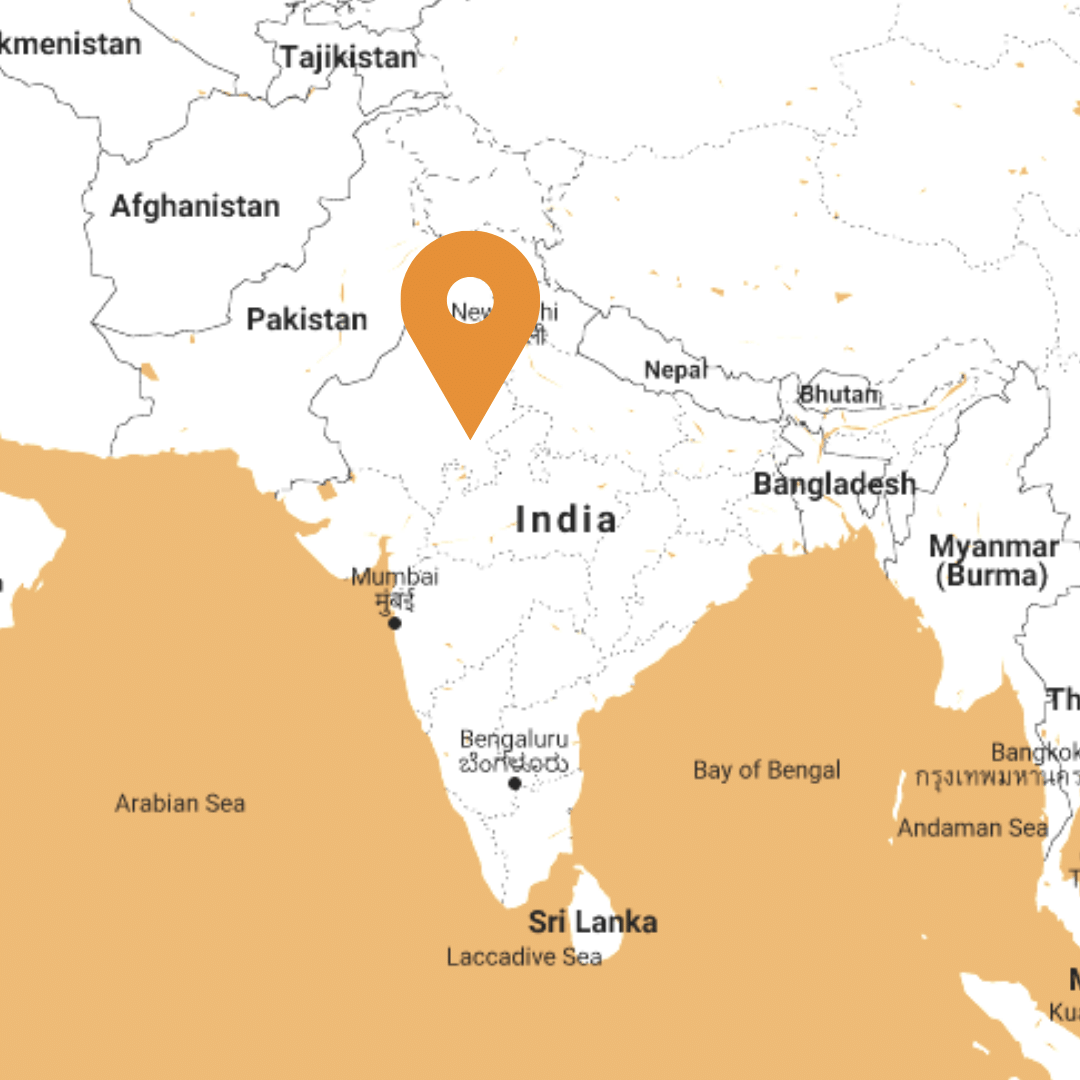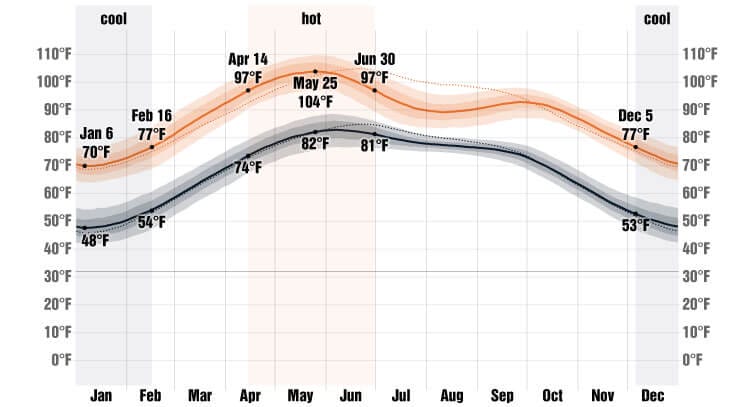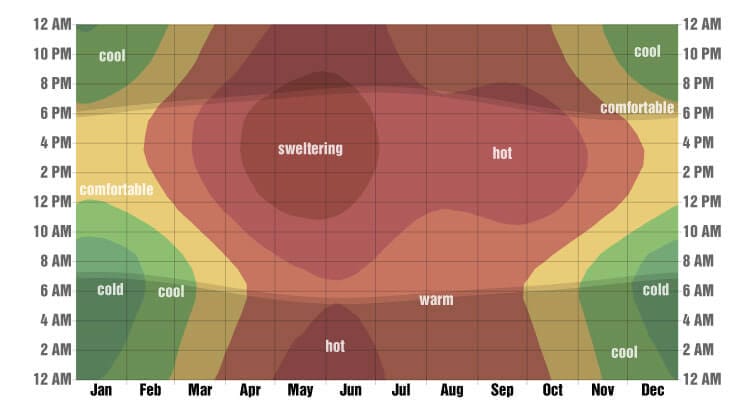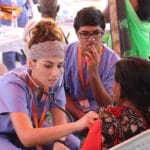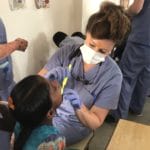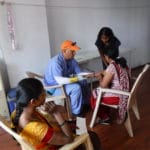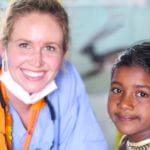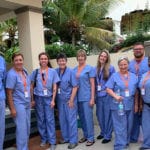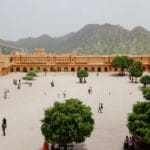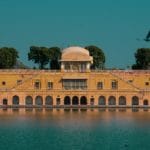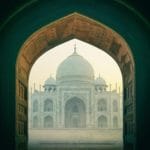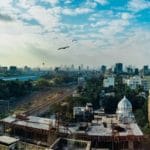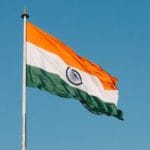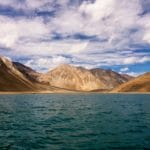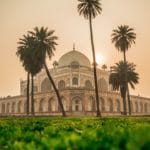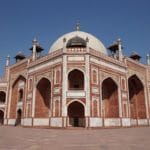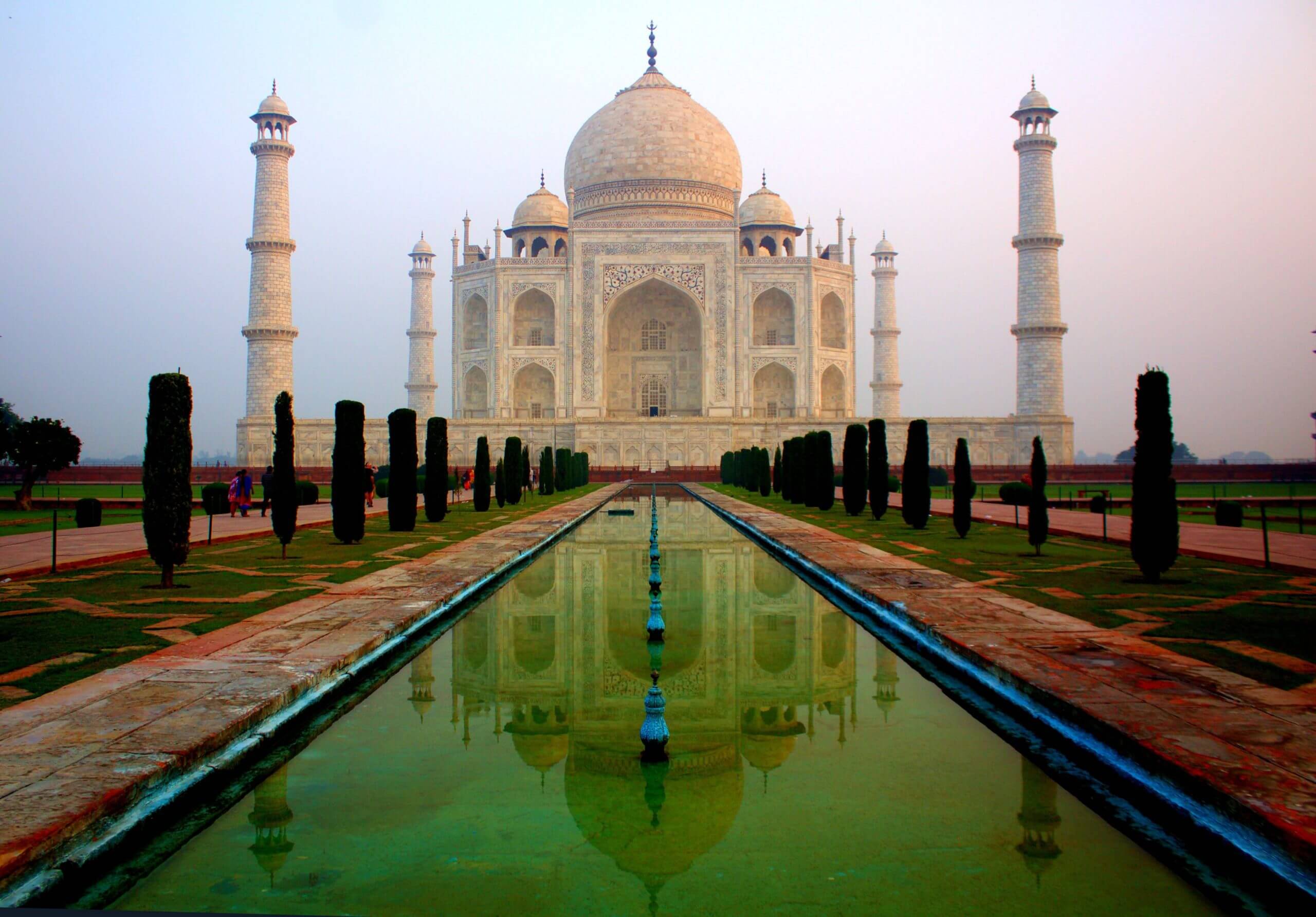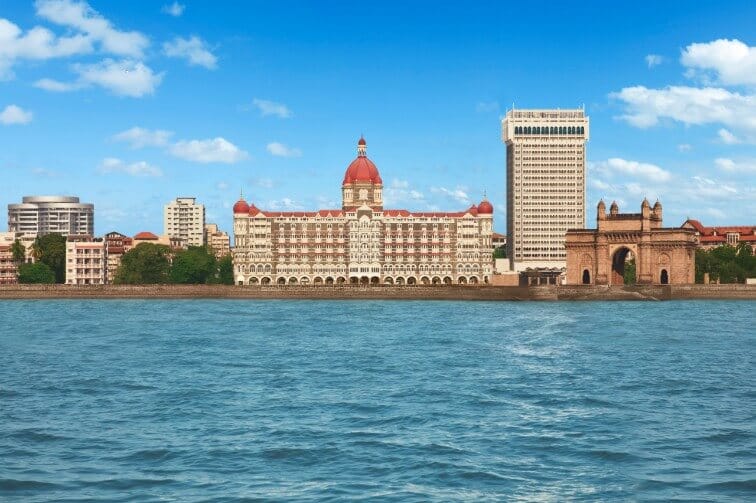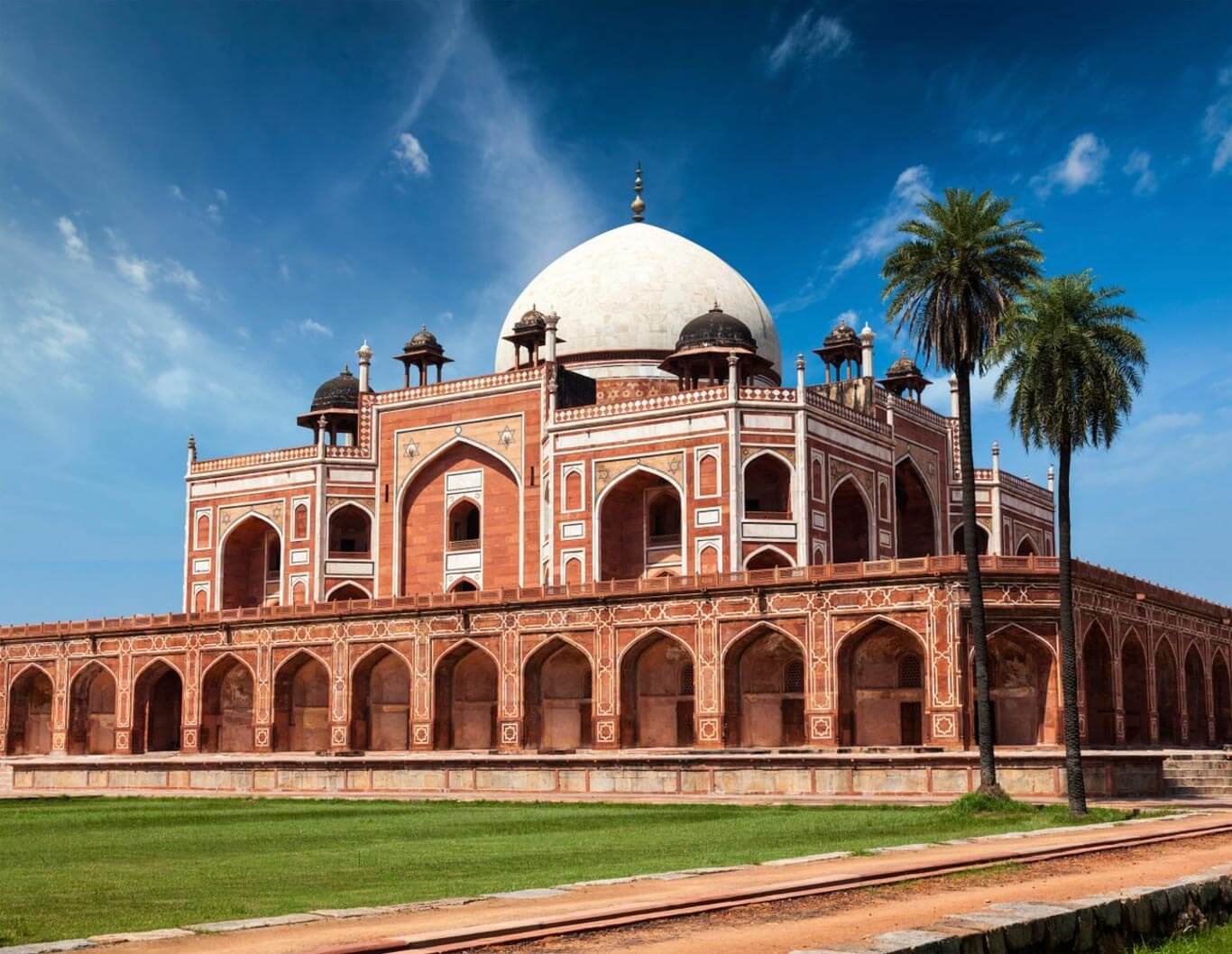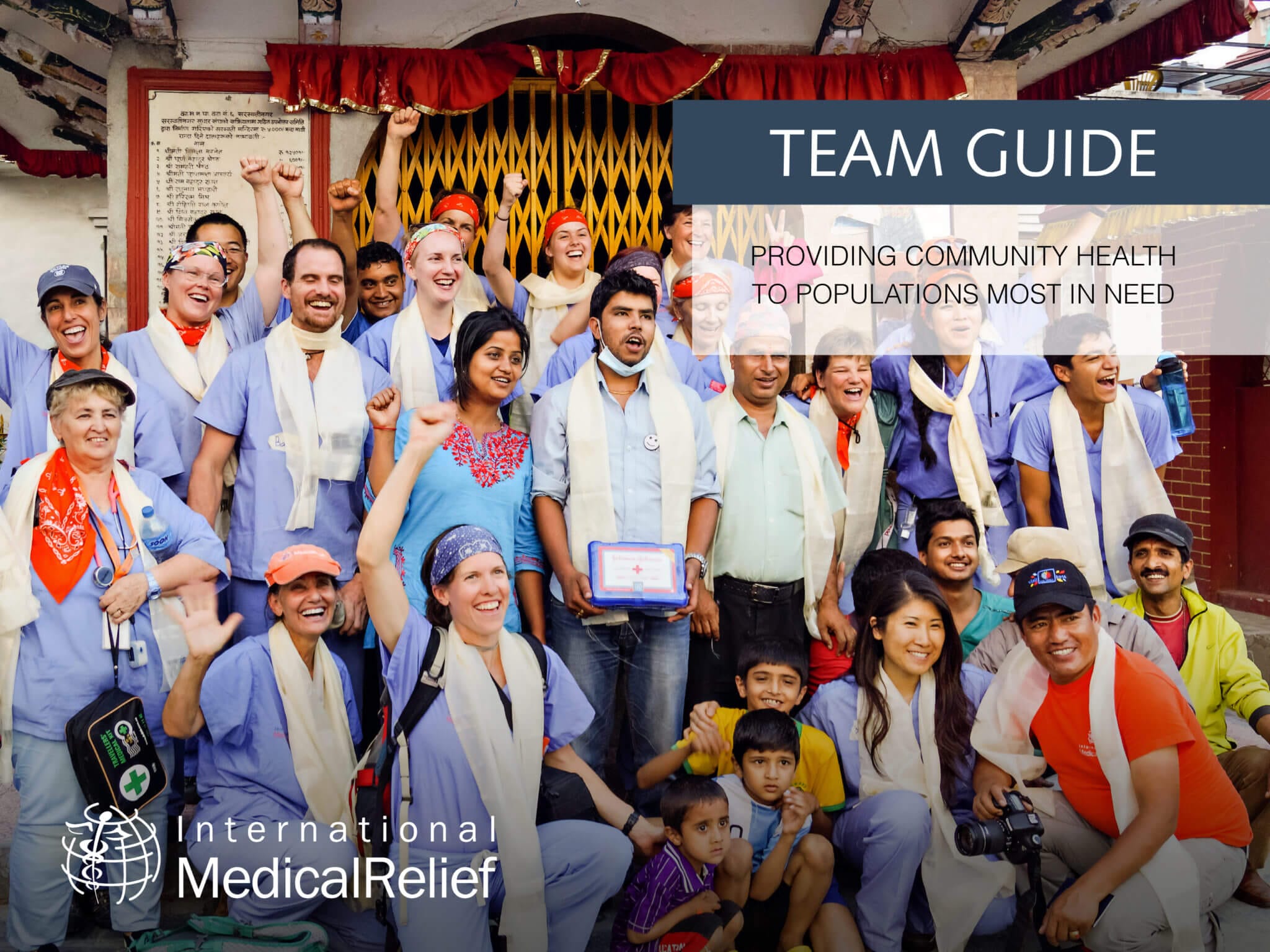Your generous donation helps to save and change lives every day.
Your charitable investment will go toward ongoing global relief to care for the underserved and vulnerable people of this community. As a member of this medical mission team, you will elevate the long-term impact of sustainable, capacity-building efforts that improve the health, wellness, and quality of life of those most in need.
Overview
The Need

India, with its rapidly growing population, presents both challenges and opportunities for the medical community. Despite having a well-trained healthcare workforce, the country continues to grapple with significant public health issues. Overcrowding, inadequate sanitation, and poverty exacerbate health disparities, particularly affecting the most vulnerable populations. In 2018, the country reported an infant mortality rate of 30%, and gender health disparities persist, leaving women at heightened risk for various health conditions.
International Medical Relief (IMR) invites you to join us in addressing these critical healthcare needs in the communities surrounding Jaipur. As a valued member of our team, you will have the opportunity to deliver high-quality medical care to those who need it most, working in clinics set against the backdrop of southern India’s rich cultural heritage. This is more than just providing medical services—you will be engaging with complex cases in underserved areas, where your expertise can make a profound difference.
Your skills and knowledge will help bridge the gap for those who often fall outside the healthcare system, offering not only medical attention but also essential health education to empower these communities. The work you do will not only provide immediate relief but will also contribute to sustainable health improvements in areas where access to care is limited.
Take this opportunity to broaden your clinical experience, immerse yourself in a unique cultural setting, and make a tangible impact on global health. Join IMR and bring your expertise to a mission that truly matters. Together, we can transform lives and elevate health outcomes for those in greatest need.
Our Work

Since 2011, International Medical Relief (IMR) has been committed to addressing critical health needs in India, focusing on sustainable healthcare solutions that empower communities for the long term. Our initiatives extend beyond immediate medical care to include vital education on clean water, dehydration management, malnutrition, family planning, oral health, respiratory diseases, malaria prevention, and hygiene practices. By partnering with local health officials, we are not only providing direct care but also building lasting relationships and strengthening the local healthcare infrastructure.
Our missions are strategically designed to align with the United Nations Sustainable Development Goals (UNSDG), specifically Goal 3: Good Health & Wellbeing and Goal 17: Partnerships for the Goals. Through meticulous planning and collaboration, we ensure that each mission has measurable outcomes that contribute to these global objectives.
IMR’s approach emphasizes capacity building and sustainable impact. By working side-by-side with local healthcare professionals, we help increase workforce density and cultivate a network of future healthcare leaders committed to improving public health outcomes. Our collaborative model supports the development of a robust local healthcare system, empowering communities to continue advancing their health and wellbeing long after our team departs.
 Aligned with UNSDG 17, IMR only enters a country through formal invitations and partnerships, ensuring that our efforts are guided by local expertise and address the most pressing community needs. This respectful and coordinated approach allows us to provide essential medical and dental care, along with health education, in areas where these services are desperately needed.
Aligned with UNSDG 17, IMR only enters a country through formal invitations and partnerships, ensuring that our efforts are guided by local expertise and address the most pressing community needs. This respectful and coordinated approach allows us to provide essential medical and dental care, along with health education, in areas where these services are desperately needed.
Join IMR in this impactful work, and contribute your expertise to a mission that not only changes lives but also builds the foundation for a healthier, more equitable future in India and beyond. Together, we can make a meaningful difference in global health.
This Mission

Imagine standing in a place where the majesty of snow-capped mountains meets the lush vibrancy of green landscapes. To your left, you see the awe-inspiring peaks, and to your right, a tapestry of rich foliage. Close your eyes and you can almost hear the lively rhythms of Hindustani music filling the air, while the flavors of freshly caught fish tantalize your senses. Welcome to India—an extraordinary country that captivates with its breathtaking beauty, diverse landscapes, and vibrant cultural experiences.
As the seventh-largest and second-most populous country in the world, India is a land of stunning contrasts and endless exploration. From the towering Himalayan mountains to the sprawling deserts, from serene coastal plains to the vibrant cities teeming with life, every corner of India tells a unique story. It is truly a place of “Unity in Diversity,” where countless languages, religions, and traditions converge in a harmonious tapestry that is as complex as it is inspiring.
This trip takes you to Jaipur, the enchanting capital of Rajasthan, known as the “Pink City” for its beautifully colored buildings. Founded in 1727 by the visionary king Sawai Jai Singh II, Jaipur is one of India’s earliest planned cities, offering a blend of historic charm and modern vibrancy. Walking through its bustling streets, you’ll be surrounded by stunning architecture, vibrant markets, and the welcoming smiles of its people. As you explore, you’ll discover a city rich in history, from its magnificent palaces to its vibrant artisan communities.
 Yet, amidst this cultural richness, many residents face significant challenges accessing healthcare. During our time here, IMR will provide essential medical care and health education to those who need it most, particularly in underserved communities where the out-of-pocket costs of even subsidized healthcare are prohibitive. Your expertise and compassion can make a profound impact in these neighborhoods, where overcrowding and limited resources have strained the local healthcare system.
Yet, amidst this cultural richness, many residents face significant challenges accessing healthcare. During our time here, IMR will provide essential medical care and health education to those who need it most, particularly in underserved communities where the out-of-pocket costs of even subsidized healthcare are prohibitive. Your expertise and compassion can make a profound impact in these neighborhoods, where overcrowding and limited resources have strained the local healthcare system.
Jaipur’s diverse population is predominantly made up of merchants and artisans, and its unique cultural fabric is woven from centuries-old traditions and crafts. However, rapid population growth has led to a housing shortage, and many people live in converted commercial spaces, further complicating their access to essential services.
Join us on this incredible journey as we bring much-needed support to the vibrant and resilient people of Jaipur. This is more than a trip—it’s an opportunity to immerse yourself in the beauty and complexity of India while making a meaningful difference in the lives of those who call this remarkable place home. Come ready to be inspired, and leave forever changed.
Lodging/Transportation

Experience the charm of Jaipur with quaint, authentic lodging that blends traditional Indian amenities with community comfort. Enjoy rooms featuring local decor and craftsmanship, and indulge in delicious, authentic cuisine prepared fresh daily. Throughout your stay, you’ll be fully immersed in the rich culture of India while relaxing in accommodations designed to make you feel at home. For true Western-style accommodation, see our Signature Trip option with 4+ star comfortable lodging and private bathrooms; the only difference between the two trips is the accommodation.
IMR has also arranged safe and reliable transportation to and from your clinic locations, ensuring a seamless and enjoyable experience as you serve the community.
Highlights

Extend Your Stay
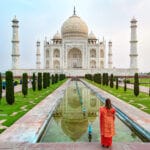
Since you are already venturing across the globe, have you considered extending your stay by a few days to see some of the top tourist destinations around Delhi? IMR offers an exclusive three-day extension to its volunteers provided by our partner, Worldwide Navigators.
Worldwide Navigators offers a fantastic opportunity to continue your trip and explore off the beaten path, giving you more time to see the sights in India.

Explore the Wonders of Agra and Old Delhi
Extend your journey with a two-day excursion to the iconic city of Agra, home to the breathtaking Taj Mahal. Marvel at this architectural masterpiece, a UNESCO World Heritage Site and one of the Seven Wonders of the World, as you learn about its fascinating history and the love story that inspired its creation. After soaking in the beauty of the Taj, you’ll have the chance to explore Old Delhi, where you can wander through the bustling bazaars, visit the historic Red Fort, and savor the authentic flavors of Indian street food. This extension offers a perfect blend of cultural immersion and historical exploration.

Encounter the Majestic Tigers of Ranthambore
For a completely different adventure, opt for a two-day extension to Ranthambore National Park, one of India’s most famous wildlife reserves. Known for its thriving population of Bengal tigers, this park provides a unique opportunity to see these majestic creatures in their natural habitat. Embark on guided safari tours through the lush forests and ancient ruins, where you may also spot leopards, deer, and a variety of exotic birds. This thrilling wildlife experience will leave you with unforgettable memories and a deeper appreciation for India’s incredible biodiversity.
Itinerary at a Glance
Arrivals & Orientation
Training
Clinic
Clinic
Clinic
Clinic
Departures
Please View Full Itinerary in the Next Tab
Full Itinerary
This itinerary is subject to change without notice.
You will need to arrange your flight destination to be Jaipur International Airport. If you need assistance booking flights, please contact Worldwide Navigators, our preferred travel agency, at travel@worldwidenavigators.com. You may also choose to arrange transportation from the airport to your accommodation, which you may purchase from within your portal under Trip Add-Ons.
Arrivals

After a long journey, you will land at Jaipur International Airport and transfer to your hotel to check in. Please plan to arrive no later than 5pm. You’ll meet up with the rest of the team and join them for a delicious vegetarian dinner and orientation. During orientation, your team leader will assign roles for clinic, explain IMR’s clinic protocols, and discuss the communities you will be serving in India.
Meals: Dinner,
Training

You and your team will provide training for local healthcare providers to continue IMR’s long-term, sustainable education efforts. Education is as important as medical and dental care for our patients. Each clinic includes basic health education according to the specialties and skills of the IMR volunteers, as well as the needs of the local people. When communities become empowered to take health and wellness issues into their own hands, they become self-sufficient. IMR provides learning opportunities for the local communities through classes and hands-on learning to sustain their well-being beyond our visit.
After training, your team will have the option to tour the City Palace and SMS II Museum. Situated in the heart of the old city, it occupies about one-seventh of the landscape. The palace is a blend of Rajput and Mughal architecture and houses a seven-storied Chandra Mahal in the center, which affords a beautiful view of the gardens and the city. Featured in the palace and museum are Diwan-E-Am, Diwan-E-Khas, Mubarak Mahal, and Sileh Khana.
Diwan-E-Am, also referred to as the Hall of Public Audience, has intricate decorations and a collection of manuscripts. In contrast, Diwan-E-Khas, or the Hall of Private Audience, has a marble-pawed gallery. Mubarak Mahal has a rich collection of costumes and textiles, and Sileh Khana has a collection of armory and weapons.
Meals: Breakfast, Lunch, Dinner,
Clinic

While in Jaipur, you can expect a high volume of patients so your days will be long and hard, but also incredibly rewarding. To help ensure seamless communication with our patients, your team will have assigned translators who will communicate your directions and recommendations to your patients for you.
After a hearty, vegetarian breakfast at your accommodation, you and your team will transport to your clinic site.
In the afternoon, you will have the option to visit the Hawa Mahal, also known as “The Wind Palace.” The Hawa Mahal was built in 1799 by Maharaja Sawai Pratap and is the most recognizable monument in Jaipur. Featuring Rajput architecture, the five-storied, semi-octagonal monument has 152 windows with over-hanging, latticed balconies. The palace also houses a new museum that displays “Jaipur Past & Present.”
Meals: Breakfast, Lunch, Dinner,
Clinic

After clinic, you and your team will have the option to enjoy a tour of Jalmahal and Amber Palace. The Jalmahal, also known as the Water Palace, is en route to Amer and is set in the middle of Man Sagar Lake. The site features a beautiful, paved causeway that leads up to the palace.
Next up is a visit to Amber Palace, the old capital of the Kachhwahas. Situated atop a range of steep hills, the grandeur of the fort is a remarkable sight with its surrounding battlements and palaces and fantastic blend of Hindu and Muslim architecture. The solemn dignity of its red sandstone and white marble pavilions, when reflected in the lake at the foothill, is a magnificent sight to behold. Raja Man Singh built the original palace with the additional extensions built by Maharaja Mirja Raja Jai Singh and Sawai Jai Singh lI, the last Maharaja of Amer, who later grew a new city called Jaipur which became the capital in 1727.
Meals: Breakfast, Lunch, Dinner,
Clinic

After your fourth day of clinic, you will have the option to venture to the Galta Ji Temple, an ancient pilgrimage center in Jaipur. Set amidst low hills and packed with locals and tourists alike, the attractive spot has temples, pavilions, and holy kunds (natural springs and water tanks). Visitors to Galtaji will come across the complex Ramgopalji temple, locally called the Monkey temple (Galwar Bagh). It gets this moniker because of a large group of resident monkeys. The green landscape and chattering monkeys add to the delight of the area. On top of the hill is a small temple dedicated to the sun god, Surya Mandir. Constructed by Diwan Kriparam, this spectacular temple can be seen from anywhere in the city.
Meals: Breakfast, Lunch, Dinner,
Clinic

On your final day of clinic you’ll likely reflect back on all those whose lives you touched during the week – and the lives that touched yours. You’ll be able to enjoy a free evening for some final explorations of Jaipur.
Meals: Breakfast, Lunch,
Departures

On your last day in India, enjoy one final breakfast with your team before beginning your departure home.
Interested in extending your stay to explore northern India? Our partner, Worldwide Navigators, offers exclusive trip extensions just for IMR volunteers! See the extensions tab on this page for details.
Meals: Breakfast,
Extensions
You’re journeying across the globe. Why not extend your stay in India to experience some of its top tourist attractions? Join us on an exclusive trip extension and visit some of the area’s highlights.
Delhi, India Extension
Highlights:
- Discover the world-renowned Taj Mahal, learning the history and magic at every turn
- Explore the winding streets of Old & New Delhi, and uncover what makes this city tick
- Visit the historic Humayun’s Tomb
Itinerary:
Day 1: New Delhi
Welcome to New Delhi! During your stay in this lively city, you will enjoy some of the area’s top spots such as:
Humayun’s Tomb (First Garden Tomb)
A UNESCO World Heritage site. The tomb was built in 1565 by Hamida Banu Begum and is one of the most beautiful Mughal monuments, with a 42.5-meters high double dome with marble and pillared kiosks. The complex encompasses the main tomb of the Emperor Humayun and the graves of his wife, Hamida Begum, and numerous other subsequent Mughals.
Lotus Temple (Unified House of Worship)
Known as the Lotus Temple due to its flowerlike shape, it was designed by Iranian architect Fariborz Sahba. It serves as the Mother Temple of the Indian Subcontinent and emphasizes the spirit of the House of Worship in that it is a gathering place where people of all religions may worship. The lotus represents the Manifestation of God and is also a symbol of purity and tenderness. Its significance is deeply rooted in the minds and hearts of the Indians.
India Gate (War Memorial)
Built in 1931 and designed by Sir Edwin Lutyens, this 42-meter-high stone arch of victory stands at the eastern end of Rajpath. It lists the names of the 90,000 Indian soldiers who died in the First World War.
Rashtrapati Bhavan (President’s House)
Rashtrapati Bhavan was the erstwhile residence of the British Viceroy. Its architect was Edwin Landseer Lutyens. The decision to build a residence in New Delhi for the British Viceroy was taken after it was decided in the Delhi Durbar of 1911 that the capital of India would be shifted from Calcutta to Delhi in the same year. It was constructed to affirm the permanence of British rule in India. This building gave the impression, in the words of a critique, the setting of a perpetual Durbar.
Day 2: Agra | Taj Mahal
You will travel to Agra today for a tour of the magnificent, white marble mausoleum, the Taj Mahal.
Taj Mahal
This immense mausoleum is constructed of white marble and was built in the mid-1600s by order of the emperor Shah Jahan in memory of his favorite wife. Nothing compares with the experience of seeing the Taj for the first time. Commissioned by Shah Jahan for his favorite wife, Mumtaz, after her death in 1631, it was completed in 1653 and remains arguably the most moving testament to love in architectural history.
Red Fort of Agra
Near the gardens of the Taj Mahal stands the important 16th-century Mughal monument and UNESCO World Heritage Site known as the Red Fort of Agra. This powerful fortress of red sandstone encompasses, within its 2.5-km-long enclosure walls, the imperial city of the Mughal rulers. It comprises many fairy-tale palaces, such as the Jahangir Palace and the Khas Mahal, built by Shah Jahan; audience halls, such as the Diwan-i-Khas; and two very beautiful mosques.
Day 3: Old Delhi | Departure Home
Old Delhi is bursting with bazaars, which are good places to begin your exploration of the area. Before heading to the airport for your departure home, be sure to check out some of Old Delhi’s staples:
Chandni Chowk
The markets seem to sell everything, though textiles, clothing, jewelry, and antiques comprise the bulk of the wares. The goings-on at Chandni Chowk, one of the oldest and most iconic markets, will spark the interest of even the most jaded traveler.
Jama Masjid (the mosque commanding a view of the world)
The Mughal Emperor Shah Jahan, builder of the Taj Mahal, commissioned its construction. Five thousand craftsmen labored for six years to build the mosque. Completed in the year 1656 C.E., Jama Masjid constitutes one of the largest and best-known mosques in India. Shah Jahan enhanced the imposing grandeur of the edifice by placing it on high ground.
What’s Included:
- 3-Day, 2-Night Tour
- Ground Transportation
- 2.5 to 3-Star Accommodations
- Daily Activities & Excursions
- 2 Meals Per Day
- Tours & Entrance Fees
- Daytime Tour Guide
- 24-Hour Emergency Service
You Will Need to Provide:
- Customary Gratuities
- Travel Insurance
- Personal Souvenirs/Gifts
- Currency Exchange Fees
3-Day, 2-Night All-Inclusive Tour Starts at $600. Contact Worldwide Navigators to book this extension or get more information.
Minimum Donation
Your generous donation of $2200 will go toward the ongoing global relief to care for the underserved and vulnerable people of this community. As a member of this medical mission team, you will elevate the long-term impact of sustainable, capacity-building efforts that improve the health, wellness, and quality of life of those most in need. A small portion of your donation includes:
- Clinic supplies and medications for patients
- Clinic participation
- Transportation, accommodations, and meals as outlined in the itinerary
Donation Payment Deadlines
$2000 due by September 29, 2025
$2200 due by November 30, 2025
Early Bird Savings Opportunity
To be eligible, the participant must upload ALL your required documents and forms, sign their liability form and make your 50% donation including your $35 application fee by September 29, 2025. This savings opportunity does not apply to disaster relief missions.
Featured Enhancements
**To purchase any of the above Featured Enhancements for your mission, please contact our office at office@imrus.org or call at (970) 635-0110.
Your Donation to IMR for Your Mission Cost Includes:
All group costs from the time you arrive at the team meeting point in country until you separate from the team or when the team arrives at the departure airport, including:
- Transportation
- Lodging (except for Colorado missions, disaster missions, or as otherwise mentioned in the trip itinerary)
- Costs associated with the clinic
- Food
- Tips for services provided to the IMR team
- All logistics, including translation services and security as needed
Additional Costs That You Are Responsible For:
All group costs from the time you arrive at the team meeting point in country until you separate from the team or when the team arrives at the departure airport, including:
- International and Domestic flights to the country.
- Passport fees, visa fees, and transit fees, including baggage or overnight accommodations/meals while in transit
- Required or recommended insurance
- Vaccinations and medications common for travel
- Spending money for souvenirs and personal purchases
- Required or desired mission supplies, personal equipment, or small gifts for the special people you meet
- Any lodging, meals, and transportation outside of the scheduled team mission, payable at the time of service to the local vendor
- COVID-related fees such as testing, vaccinations, and quarantines as required by in-country arrival/departure or USA arrival/departure
- Each team member is responsible for carrying medical supplies for the deployment. All fees associated with transport are the responsibility of the volunteer.
